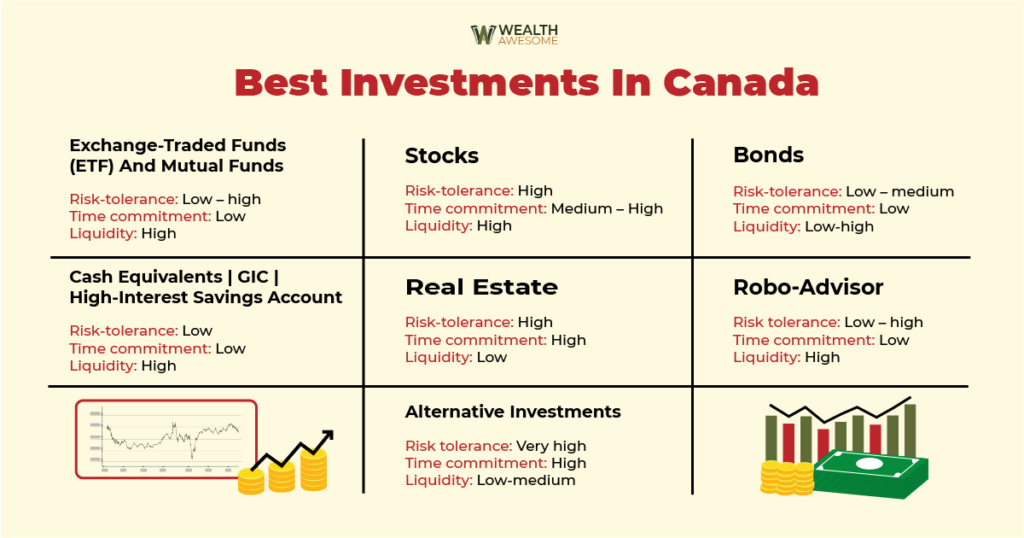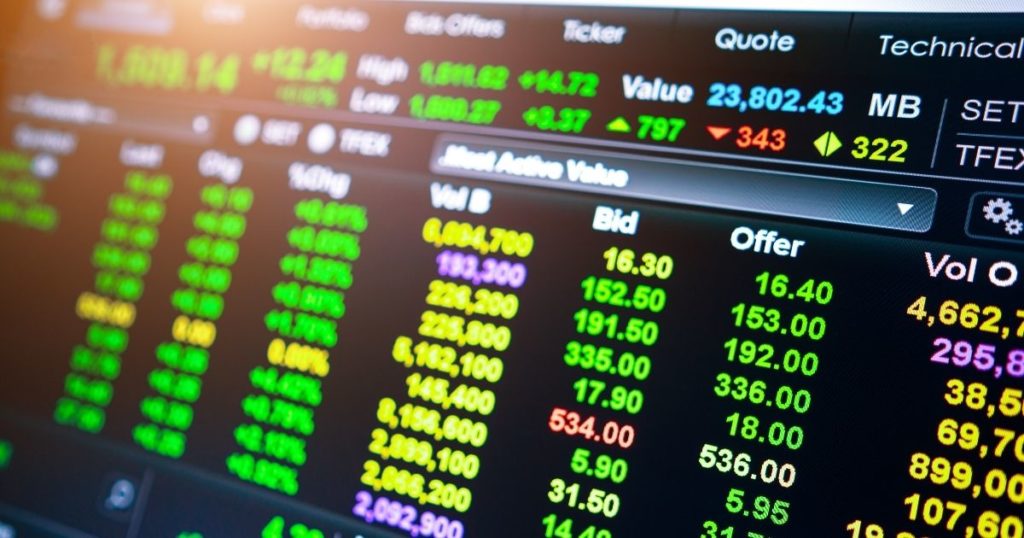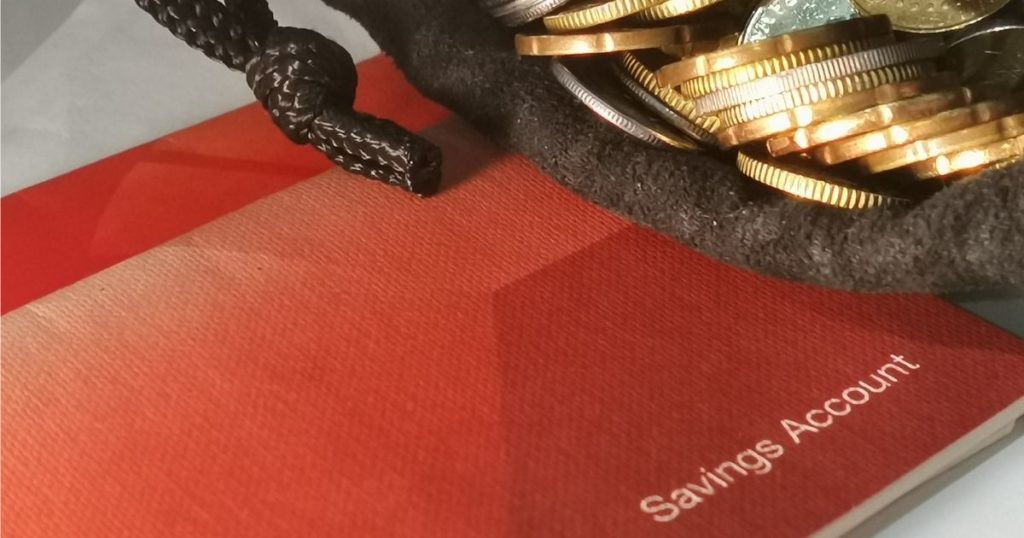If you’re looking for the best investment opportunities in Canada, you might be overwhelmed by all the different options.
I must confess that the term “the best investments in Canada” is a bit misleading. Instead, you need to find what are the best investments for you.
At the end of 2022, Canadians held over $2.12 trillion in mutual fund and ETF assets. But that doesn’t mean you should invest in only mutual funds and ETFs.
After working in Canadian finance roles for over 11 years and experimenting with different investing methods, I’ve developed my own strategies for the best investments for myself.
You can learn about all the different options for investing in Canada and develop your own strategy by reading the following article.
Before You Start Investing
Before we can answer the question of how to invest money in Canada, there are a few things you should figure out. Let’s go over them:
1) Risk Tolerance
Knowing your risk tolerance is key to knowing which investments are “best” for you. For example, someone with no risk tolerance at all, who would not be able to stand any losses in their portfolio at any time, would have to be 100% invested in cash equivalents.
On the other hand, someone with a very high-risk tolerance could invest 100% in stocks.
I want to hammer home the point that your risk tolerance is just one piece of the puzzle for determining your best investments. Just because your risk level can tolerate being invested 100% in equities doesn’t mean you should be.
There are a few ways to figure out your risk tolerance, such as consulting with a finance professional, or you can self-assess by taking an online risk survey. Vanguard has a free investor questionnaire you can take here.
2) Time Horizon
The longer your time horizon to invest, the more risk you can take. If you are approaching retirement in a few years and will need money from your investments right away, you can take much less risk than someone in their 20s or 30s who won’t need the money for several decades.
3) Short-term cash needs
If you have large upcoming purchases to make in the next few years, such as a house or paying for a child’s university education, you will be able to take on much less risk since you will need the money in the short term.
You will need more liquid investments if you need cash to make upcoming purchases.
4) How much time do you want to spend investing
Certain investments will take up more time than others. Time is money, so learn to balance how much time you’re spending on investing. For example, investing in physical real estate will consume much more of your time than if you were to invest in a stock.
Best Investments in Canada

Here’s a list of some of the top investment options that you can find in Canada:
1. Exchange-Traded Funds (ETF)

Risk-tolerance: Low – high
Time commitment: Low
Liquidity: High
Time Horizon: Medium to high
Fees: Low
ETF investments in Canada have grown by more than eight-fold from 2011 – 2022, adding a staggering $304 billion in assets. Let’s take a deep dive into why they are so popular.
An exchange-traded fund (ETF) is a collection of stocks or other securities that are designed to track a certain underlying index. For example, you can buy a Canadian S&P/TSX index fund that will track 60 large companies in Canada.
Tracking major indices such as those is the most common use of ETFs for investors, but you can also invest in various industries and markets.
The biggest appeal to me for ETFs is the very low fees, ease of use, and diversification you can get with one single product.
These days, there is an ETF for almost anything, from categories as diverse as dividend ETFs to cryptocurrency ETFs. Be sure to check the risk rating for each ETF in the fund facts, as they can range from low to high. ETFs are usually better suited for more medium to long-term investing.
There are two main ways to invest in ETFs:
Buy All-in-one ETFs
You can purchase an ETF for a low fee that doesn’t need to be rebalanced, such as the Vanguard or iShares All-In-One Portfolio series. These ETFs have been growing in popularity and are great for both beginner and experienced investors.
Build Your Own ETF Portfolios
You can purchase a combination of bond and equity ETFs to meet your desired risk tolerance. More investment knowledge will be needed here, and you’ll have to rebalance your portfolio at regular intervals.
For a more in-depth guide on how to set this up, check out how to invest in ETFs in Canada. Also, check out the best ETFs in Canada here.
2. Stocks

Risk-tolerance: High
Time commitment: Medium – High
Liquidity: High
Time Horizon: Medium – High
Fees: No management fees
Buying individual stocks usually involve a higher risk than buying funds because your money invested will be more concentrated. Your investments can be volatile, with potential large swings in prices.
You’ll generally spend more time analyzing and researching stocks before purchasing them than an ETF. If you’re doing it properly, you’ll be researching each individual company carefully before buying or selling its stock.
As a Canadian, I think it’s wise to invest in some stocks outside of the country to avoid what’s called a home bias. But you should be aware of the extra fees of buying individual U.S. or other international stocks. You will usually be charged a foreign exchange fee to convert your money into another currency.
A great thing about stocks is that it has no management fees. Your stock risk will also depend on how many stocks are in your portfolio. If you are more diversified (i.e. more stocks in different sectors), this will generally lower the amount of risk.
Over the years, I’ve personally shifted more of my investments away from stocks and more into ETFs. Even though I love analyzing and buying stocks, I found it took up too much of my time, but that is just my preference.
To learn more, check out this in-depth guide on how to buy stocks in Canada.
3. Bonds

Risk-tolerance: Low – medium
Time commitment: Low
Liquidity: Low-high
Time Horizon: Medium – High
Fees: Low
Bonds, commonly known as fixed-income, are an investment you can purchase that will generate interest, regardless of how the market performs. They are lower risk and less volatile than stocks and are used to balance out your asset allocation between equities and fixed income.
Example: Brenda is a 30-year old sales manager. She filled out a risk-tolerance questionnaire and determined she has a low-risk tolerance. Her recommended asset allocation is 60% fixed income and 40% equities, and she decided to achieve this by purchasing a bond ETF and an equity ETF.
There are many different ways you can buy bonds, such as:
- Bond ETF – Liquid and can sell on an exchange.
- Bond mutual fund – Liquid and can sell at any time also.
- Buying an individual bond – constricts you the most and the least liquid as they usually have a locked-in time of investment.
My preferred method of purchasing bonds is using a bond ETF, as they don’t lock up your money and have low fees. Bond ETFs are traded on an exchange, so you can buy or sell them on the market.
Read my picks for the best bond ETFs in Canada here.
4. Cash equivalents | GICs | High-Interest Savings Account

Risk-tolerance: Low
Time commitment: Low
Liquidity: High
Time Horizon: Short – Medium
Fees: Usually none
For emergency funds and short-term purchasing needs, you can’t go wrong with investing in cash equivalents. If you know you need to make a purchase within a year or two, putting your money in a high-interest savings account (HISA) or GIC is a no-risk way of earning some money while you wait to make the purchase.
High-interest savings accounts have seen higher rates due to the increase in online banks in Canada, which offer much higher rates than traditional banks (often over 100 times more).
For my emergency fund and short-term purchases, I use EQ Bank, which has a savings rate of 2.25%. It’s a good way to try to keep pace with inflation and provides maximum flexibility for your cash.
GICs lock up your money for a certain amount of time but will offer higher rates than savings accounts. For example, EQ Bank offers a 1-year GIC rate of 5.35%, which is higher than their regular savings rate.
Make sure your bank accounts are covered by CDIC insurance (for up to $100,000 per account), so even if the bank goes belly up, you’ll still be ok.
5. Real Estate

Risk-tolerance: High
Time commitment: High
Liquidity: Low
Time Horizon: Medium – Long
Fees: Very High
Real estate as an investment is risky because you are concentrating your investments on one asset, and it’s usually with borrowed money. Although the Canadian real estate market has seen staggering growth in the years following 2008, there is no guarantee it will last in the future.
Liquidity for real estate is low, meaning it would be hard to make a quick sale to get the money you need. During an economic downturn, rents will decrease and finding tenants for your real estate might be harder.
You can also look beyond Canadian real estate investing to international markets like the U.S. or even abroad in Europe or Asia, but that will require an even higher time commitment and risk tolerance.
Many people have gotten wealthy from real estate investing, but know that it can take a high time commitment and a high-risk tolerance to do so. An alternative to real estate is buying a REIT stock or ETF, which is more liquid and requires less time commitment.
Related Reading: The best real estate investment options in Canada.
6. Robo-Advisor

Risk tolerance: Low – high
Time commitment: Low
Liquidity: High
Time Horizon: Medium – Long
Fees: Low – Medium
Robo-advisors is a fancy term for an investment company that will buy and balance a basket of ETFs for you based on your risk tolerance and investment goals. You’ll do a risk survey to place you in a managed ETF portfolio.
Because robo-advisors operate entirely online and purchase low-fee ETFs, they have low overhead, and they can offer their services for a relatively low fee.
These companies usually offer advisors you can reach by phone or chat, and they will automatically rebalance your portfolio so you’re not straying from your investment goals. There will usually be additional features like tax-loss harvesting during tax season also.
If you are new to investing and want to spend next to no time managing your investments for a low fee, robo-advisors are a great option.
Questwealth has the lowest fees for a robo-advisor in Canada, plus it’s an actively managed portfolio. Learn more about Questwealth here.
7. Alternative Investments

Risk tolerance: Very high
Time commitment: High
Liquidity: Low-medium
Alternative investments in Canada are not publicly traded and include things like private equity, hedge funds, private debt funds, and peer-to-peer lending.
The liquidity is sometimes quite low, with many of these investments requiring locked-in periods where you won’t be able to withdraw your money.
Investors choose alternative investments because they believe they can give them higher returns. However, certain alternative investments, such as hedge funds that can have massive fees, are not proven to outperform the stock market.
Warren Buffett famously won a $1 million bet against a hedge fund manager that a simple ETF would outperform his chosen hedge funds over a ten-year period.
If you’re considering alternative investments, do your research carefully and see if the potential larger returns are actually worth the higher risk, larger entry minimums, and bigger time commitment.
8. Gold and Precious Metals
Investing in gold and precious metals can be a strategic addition to your investment portfolio. These assets, often referred to as “safe-haven” investments, tend to have a negative correlation with traditional financial markets, such as stocks and bonds.
This means that when economic uncertainties arise or financial markets experience turbulence, the prices of gold and precious metals can (potentially!) rise.
One of the primary reasons investors turn to gold and precious metals is as a hedge against inflation. Unlike paper currencies, which can lose value over time due to inflation, the intrinsic value of precious metals remains relatively stable. Holding a portion of your investments in gold or precious metal assets can therefore help preserve your purchasing power in times of rising prices.
While these assets can provide diversification benefits, they also come with their own set of risks. Prices of gold and precious metals can be volatile, and their value depends on various factors, including supply and demand dynamics, geopolitical events, and global economic conditions.
There are several ways to invest in gold and precious metals, including:
- Physical Assets: You can buy physical gold in the form of coins, bars, or even jewelry. Owning physical gold allows you to have direct control over your investment.
- Precious Metal ETFs: Exchange-traded funds (ETFs) that track the performance of gold and other precious metals are available. These ETFs provide a convenient way to gain exposure to these assets without owning physical metal.
- Mining Stocks: Investing in companies that mine or produce precious metals can also be an indirect way to participate in this sector. However, keep in mind that mining stocks can be influenced by factors beyond just the price of metals, such as operational risks and management decisions.
Related Reading: How To Buy Gold In Canada
A Special Note About Mutual Funds
Risk-tolerance: Low – high
Time commitment: Low
Liquidity: Medium
Time Horizon: Medium to high
Fees: High
A mutual fund hires portfolio managers who will actively buy and sell stocks in an attempt to beat a benchmark index. The fund company then charges a high fee, often in excess of 2% to its investors per year.
I worked for one of Canada’s largest mutual fund companies. I do not invest in mutual funds anymore for the simple reason that they are not proven to outperform the market after the extremely high fees are taken into account.
Countless studies and evidence show that the highly marketed “active management” that mutual fund portfolio managers boast of does not outperform the market on average.
This SPIVA study highlights how in 2022, over a 10-year period, 82% of Canadian equity fund managers underperformed vs the S&P/TSX benchmark index after fees were considered.
However, if you are still considering choosing a mutual fund over an ETF, I made a list of some mutual funds with lower fees here.
I also made a Youtube video about all the reasons why I don’t like mutual funds in Canada here:
What I Invest In
Here are the investing principles that work for me:
- I don’t want to spend too much time investing.
- Diversification is crucial, especially outside of Canada.
- Maintain a long-term, rational approach
- Low transaction costs and fees
I currently have an investment property that I Airbnb to tenants (currently it’s being rented out long-term now due to COVID) and invest in mostly ETFs and a little bit in individual stocks. These investments give me access to international companies.
I have a manager for my investment property, so I don’t spend much time on it.
I don’t invest in any bonds because I have a very high-risk tolerance and a long time horizon where I don’t need to touch my money for several decades. I do not recommend this for 95% of investors, as the risk is quite high that I can lose a large amount in any given year, and many people won’t be able to tolerate that risk.
I think most investors should have some fixed income in their investment portfolios. As I get older, I will likely shift some money out of equities and into fixed income.
I wanted to tell you my personal investment strategy to inspire you to come up with your own. What I do will likely be very different than what is best for you. It’s up to you to determine the best investments in Canada for yourself.
Conclusion
Learning where to invest money in Canada doesn’t have to be overwhelming. Get educated about investments and figure out what the best investments in Canada are for you.
That valuable knowledge can lead to a lifetime of being better with your finances.
If you want to invest in Canada but aren’t sure where or how to get started, read the guide on how to start investing in Canada.






Great article! I currently only have a market-oriented investment portfolio, but in time I’d like to get into Airbnb as well as you mentioned in your conclusion. That is the dream!
This was a very clear and straightforward read, thanks for putting it together! My only objection would be that savings accounts are hardly considered an investment. Even with a high-yield on you’re barely going to outpace inflation. Other than that though I liked it and also appreciate you putting in your own commentary on your personal investments. I’ll be sure to follow along for more updates!
Thanks Arthur, yeah I agree that high-yield savings accounts aren’t exactly investments. I mainly wanted to highlight that many investors aren’t aware they exist at all, plus how I use it to supplement my investment strategy.
Hey Christopher,
I recently (6 months ago) moved most of my investments from fully managed MF’s to TD ETF’s including TD CDN Agg Bond Index ETF. My TD INTL Equity Index, CDN Equity Index and US Equity Index ETF’s are doing well but the CDN AGG Bond Index has consistently lost money. Should I move to something else?
Hi Christa, I would hold tight on it for now, a lot of bond funds have lost money this year it’s been a challenging environment for many of them. It depends on your risk tolerance and asset mix though so you should figure that out exactly first
Hi,
I have a “Restricted Life Income Plan – BNS” and I would like to take out the money and invest it in anything, on my own.
Can you help me do this?
George
Hey George you’ll have to go to either the agent who sold you the plan, or the company who issued it for more help. They will walk you through your options.